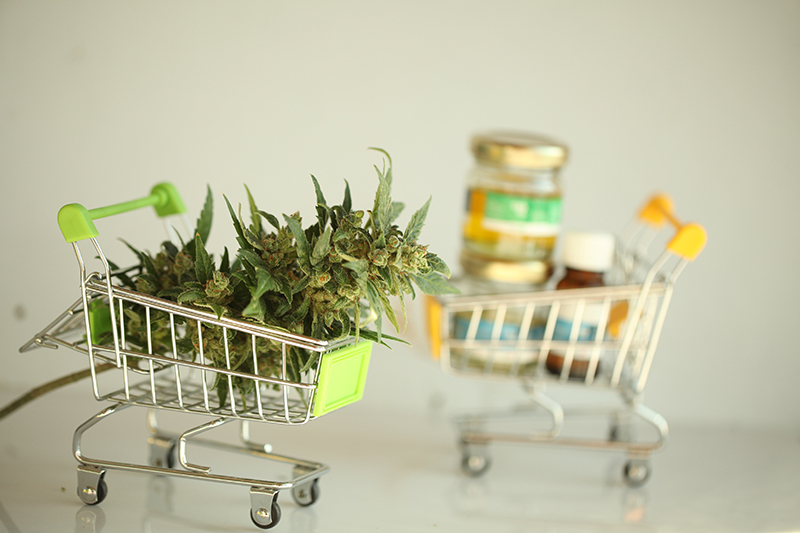I want to add some information I just gathered regarding the THC/CBD on line sales apps. In the January 2020 Marijuana Business Magazine I read an article called “Point & Click”. Online shopping for cannabis and CBD is becoming more popular. Chris Znerold, CMO for Native Roots said that customers who order online and pick up in-store tend to spend 50% more than when they visit a retail store. They like to order ahead and skip the line. Plus it can be less intimidating.
I have spoken to, and connected with, a lot of people who have taken their professional experience in the Consumer Packaged Goods (CPG) and the Retail Technology world to the cannabis and CBD industry. Not only have they brought experience but also passion. They are bringing a legitimacy to these products and are willing to work within the restrictions to bring products online and in stores. Now that cannabis and CBD have become more mainstream, traditional retail strategies are used to merchandise, promote and advertise products. It makes this industry really exciting to watch.

Cannabis and CBD are sold like any other product
With all the talk about failing retailers, this industry is on the upswing. Below are the parallels between this relatively new industry and typical retail
- Marketplaces. Amazon is the most widely known marketplace but the cannabis industry has the equivalent type of service with Weedmaps and others (MedMen, I Heart Jane, and Eaze to name a few). Weedmap’s tagline is Browse, Order, Smile. They showcase brands available to a buyer, locations of dispensaries and delivery options. (No drone deliveries…yet.)
- Store Fronts / Dispensaries. Stop into some dispensaries and you will find budtenders whom I would equate to the blue shirts at Best Buy. They can advise and help you choose the right strain for your needs—be it recreational or medicinal. Besides the cannabis that is sold like loose tea, there are edibles, oils, lotions, bath bombs etc. This is where packaging and displays become as important as any other CPG product. And of course, many dispensaries offer BOPUS (buy online, pickup in store). There are also loyalty programs and promotions.
- Direct to Consumer (DTC). So many DTC brands started online and grew to have a brick-and-mortar presence—Warby Parker, Bonobos, Casper and Everlane to name a few. There are several cannabis and CBD brands that have their own online store and sell DTC. This industry has already started to embrace this strategy. Curaleaf, for example, has it’s own branded stores and sells their product online.
- Pop-Up Shops. These can be regulated by state, but they are another option some cannabis brands have taken advantage of recently.
- Blackmarket. Blackmarket (or gray market) products are sold in several product categories but the cannabis industry is rife with these types of products. Even though cannabis is legal in California, black market sales are higher. There are plenty of unlicensed dispensaries in California and marketplaces need to be hyper aware or they can be fined for doing business with them. As soon as the products are more regulated, the ones that don’t comply will be left behind.
More information on the blackmarket: Blackmarket and the cannabis industry
Advertising and social media is challenging for this industry
If you think of the laws that regulate alcohol advertising, the same applies to cannabis. However, the products can’t be advertised nationally because each state has their own set of rules. Even though cannabis is becoming more a part of everyday life, it is still banned federally. In addition, CBD products have a different set of regulations. I know that in California billboards can be used but there are special rules for these as well. You won’t find much print advertisements but they can do direct mail if there are no coupons included. Social media platforms don’t advertise cannabis products but brands can have their own social media pages and drive traffic to these pages. Social media influencers and “cannabis friendly” social media platforms also provide a place for brands to push their own content. It is crucial for anyone in the industry to stay on top of the ever changing laws.
This article provides an overview by states: Cannabis advertising laws
What does the future hold?
More and more talented and committed marketers are pushing this industry forward. Personally, I think they will be more willing to try new and different technologies and tactics to promote their brands. They don’t have the multiple levels of stakeholders that need to approve and implement a specific strategy. Since they are working within some very challenging circumstances, they will look for ways to legally and effectively get their brands promoted. Who knows, maybe the mainstream marketers will look to this industry for new insights in the future. If and when the federal government decides to move cannabis into the same column as alcohol and tobacco, the industry will go through another surge and transformation. But the bottomline is it is still a bit of the wild west out there but it is maturing rapidly.
Here is an article about how the industry is pushing the envelope in terms of Creativity:
Defying the cannabis stigma with creativity

Leave a Reply